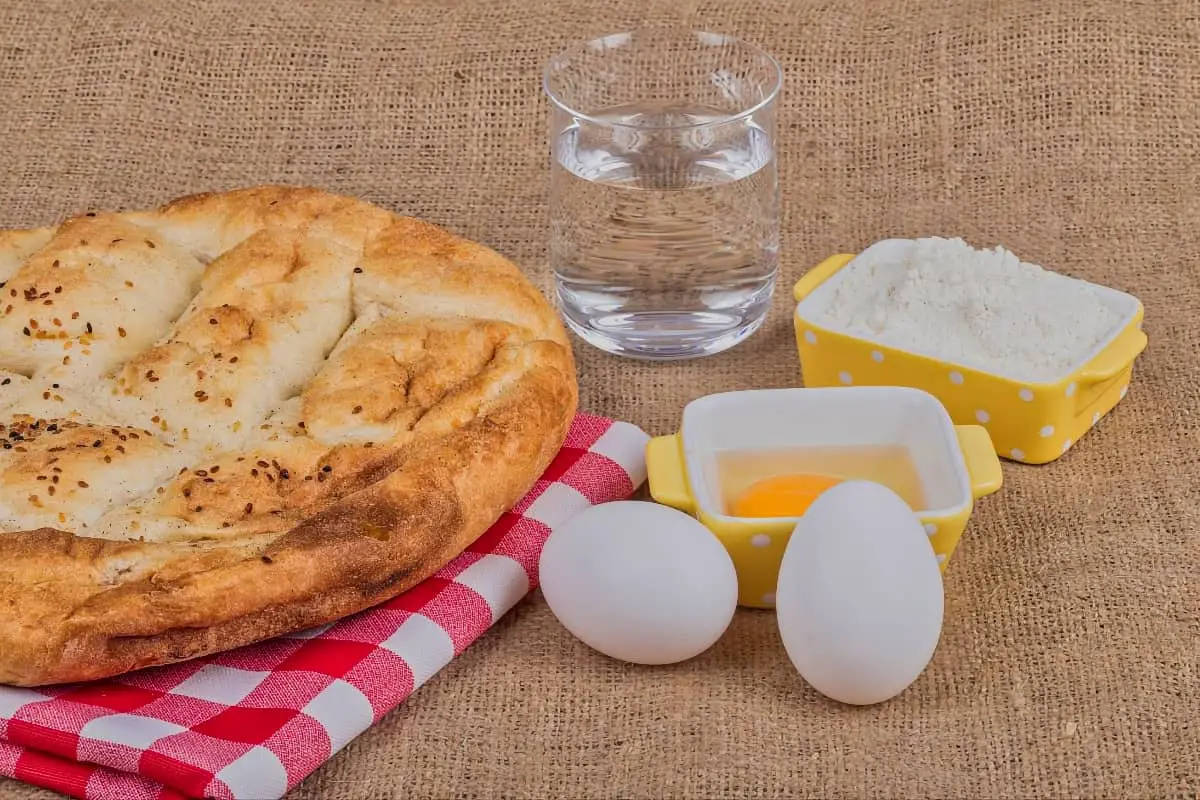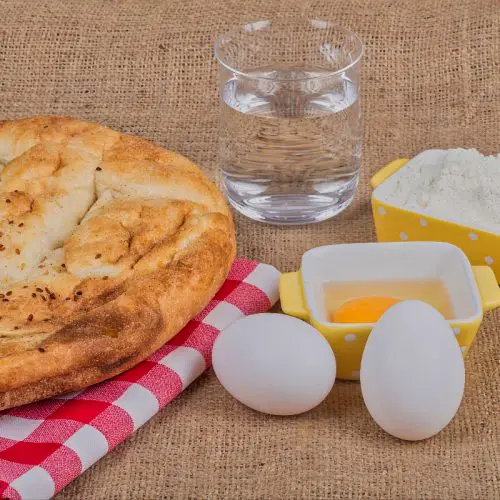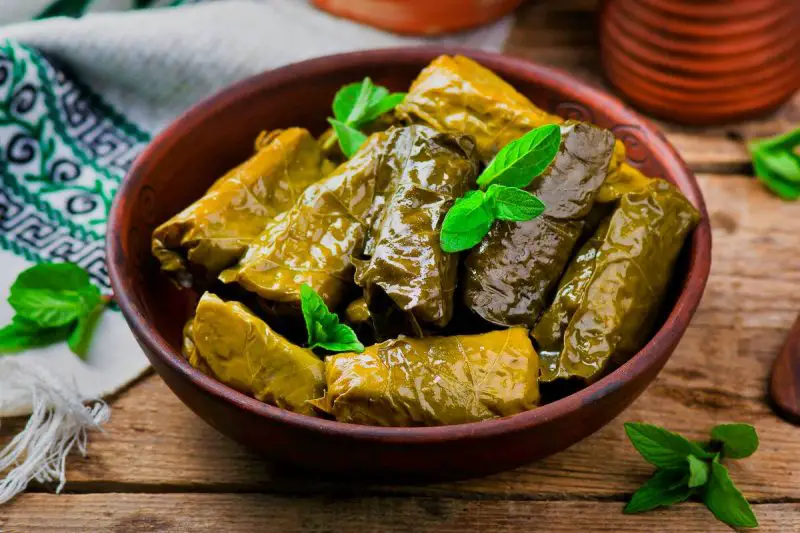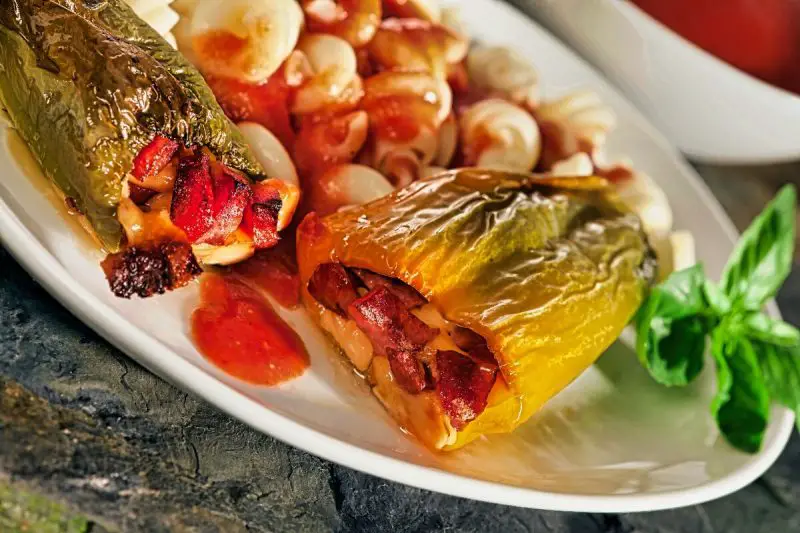
This Bosnian Lepinje recipe, sometimes called somun or Bosnian flatbread, is a popular in Bosnia and the rest of the Balkans that is soft and somewhat chewy. The Bosnian Lepinje recipe is traditionally served with evapi, although it goes well with many other spreads and meals. In this article, we’ll show you how to make genuine Lepinje from scratch at home.
Yeast is used as a leavening ingredient in the Bosnian Lepinje recipe, giving the bread its characteristic light texture after baking. Warm water, sugar, and dried active yeast are all you’ll need to make the yeast combination. Let the mixture to sit undisturbed for about 10 minutes, or until it begins to foam and bubble. The yeast is made active and fully functional by this proving procedure.
Want more ideas to round-out your Bosnian Recipe Box?
A lot of great options are in these posts!
Mix the yeast mixture that has been allowed to prove with the flour and any other ingredients (such oil and salt) called for in the recipe. Use a wooden spoon or your hands to mix the ingredients into a rough dough. Overmixing the dough might make the bread harder than it should be, so be cautious.
The dough has to be kneaded for many minutes on a floured surface before it becomes smooth and elastic. Kneading the dough is essential for making Lepinje since it helps to establish the gluten structure. Use the heel of your hand to push down on the dough, then flip it over on top of itself and turn it 90 degrees to knead it. Do this again and again until the dough is smooth and elastic.
You May Want to Join The World Recipes With Our Big Escape
Share your own recipes in our Facebook Group. Find recipes from all over the world. Learn more about International Cuisine and how you can surprise you family with new and exciting foods from all over the world.
For More Photos Visit Our Instagram at World Recipes Daily – Our Big Escape
Cover the kneaded dough with a clean kitchen towel or plastic wrap and place it in a lightly oiled bowl in the fridge. Let the dough rise in a warm, draft-free place until it has doubled in size, anywhere from one to two hours. The Bosnian Lepinje recipes taste is developed during the first rise, also called bulk fermentation, when yeast produces carbon dioxide.
The dough should be carefully punched down once it has risen to remove the trapped air. Depending on the size of the finished Lepinje, divide the dough into 6-8 equal pieces. Flatten and stretch each piece with your fingers until it forms a circular disk about half an inch thick.
After the remaining 30 minutes of rest and rising time, place the formed Lepinje on a baking sheet lined with parchment paper and cover with a clean dish towel. The ultimate form and size of the bread are achieved during this second rising.
Get your oven up to temperature, preferably 475 degrees Fahrenheit (245 degrees Celsius). Put the baking sheet with the Lepinje into the oven once it reaches the desired temperature. Put the loaves in the oven and bake for 10 to 12 minutes, or until they have risen and become golden.
After the Bosnian Lepinje recipe has finished baking, take it out of the oven and place them on a wire rack to cool. Warm up some of these tasty flatbreads and have them with a side of evapi or your favorite dips and spreads.
The Complete Recipe with Ingredients and Step by Step Instructions is Listed Below
3 Reasons People Love the Bosnian Lepinje Recipe
1. Versatility: The Bosnian Lepinje recipe is popular due in part to its adaptability. Bosnian cuisine relies heavily on this versatile bread, which goes well with anything from stews to salads to the national meal, cevapi. It’s versatile enough to serve as a sandwich bread or to be toasted and spread with your favorite condiments. As a result of its adaptability, it is a favorite among amateur chefs and gourmets.
2. Unique and Flavorful Taste: The distinctive and delicious flavor is another reason why the Bosnian Lepinje recipe is so well-liked. Flour, water, yeast, and salt are the basic ingredients, but the secret to this bread’s success lies in the baking process. Lepinje’s signature smoky flavor and crisp exterior come from being cooked in a wood-fired oven. The bread has a little sour flavor and a soft, chewy texture. What makes this bread exceptional is the interplay of different textures and tastes.
3. Cultural Significance: Ultimately, the cultural importance of the Bosnian Lepinje recipe is why so many people like it. This bread has been a part of Bosnian culture for decades, and it is often served during celebrations and other family get-togethers. It is a gateway to Bosnian culture and a representation of the country’s rich culinary history. Lepinje is a means for those with Bosnian ancestry or who have visited the nation and fallen in love with its cuisine to pay tribute to those traditions.
How To Make Our Bosnian Lepinje Recipe
Ingredients (8 Servings)
4 cups all-purpose flour
1 1/2 cups warm water
1 tsp active dry yeast
2 tsp salt
Cornmeal (for dusting)
Instructions
1. In a large mixing bowl, combine the flour and salt. Mix well.
2. In a separate bowl, mix the warm water and yeast until the yeast is dissolved.
3. Pour the yeast mixture into the flour mixture and mix well until a dough forms.
4. Knead the dough on a floured surface for about 5-10 minutes, or until it becomes smooth and elastic.
5. Place the dough back into the mixing bowl, cover it with a clean cloth, and let it rest for about 30 minutes.
6. Preheat your oven to 450°F. Sprinkle a baking sheet with cornmeal.
7. Divide the dough into 8 equal parts and shape each part into a flat round. Place them on the baking sheet and let them rest for another 15 minutes.
8. Dust the tops of the dough rounds with a little bit of flour and make small indentations with your fingers.
9. Bake the lepinje in the preheated oven for 10-15 minutes, or until they are golden brown.
10. Remove the Lepinje from the oven and let them cool for a few minutes before serving.
Nutritional Information For the Bosnian Lepinje Recipe
Calories: 222
Carbohydrates: 46g
Protein: 6g
Fat: 1g
Saturated Fat: 0g
Cholesterol: 0mg
Sodium: 584mg
Potassium: 70mg
Fiber: 2g
Sugar: 0g
Prep Time: 10 minutes
Cooking Time: 15 minutes
Pots, Pans, and Cooking Equipment Needed for the Bosnian Lepinje Recipe
Large mixing bowl
Clean cloth or plastic wrap
Baking sheet
Oven
Best Way to Store Leftovers From the Bosnian Lepinje Recipe
The best way to store Bosnian Lepinje is to wrap them in plastic wrap or store them in an airtight container. They can be stored at room temperature for up to two days, but it’s best to consume them within 24 hours for optimal freshness. If you need to store them for longer, you can freeze them in a freezer-safe container or bag for up to three months. To reheat, thaw them in the refrigerator overnight and then warm them up in the oven or on a grill.
Substitutions For the Bosnian Lepinje Recipe
All-purpose flour can be substituted with bread flour or whole wheat flour.
Active dry yeast can be substituted with instant yeast. Use the same amount, but you can skip the step of dissolving it in water and simply add it to the flour mixture.
Cornmeal can be substituted with semolina or flour for dusting the baking sheet.
Substitutions For the Vegetarian Bosnian Lepinje Recipe
The Bosnian Lepinje recipe is already vegetarian-friendly, but for a vegan version, you can substitute water for the milk.
Tips and Tricks For Easier Creation
Make sure the water is warm, but not too hot, or it may kill the yeast.
Knead the dough well until it becomes smooth and elastic. This will make it easier to work with and ensure a better texture for the bread.
Letting the dough rest before baking will help it rise and become more flavorful.
Dusting the baking sheet with cornmeal will prevent the bread from sticking to the pan and give it a nice crispy crust.
Side Dishes and Desserts For the Bosnian Lepinje Recipe
Cevapi (Bosnian sausages)
Stews, such as goulash or beef stew
Grilled vegetables, such as zucchini or bell peppers
Hummus or other spreads
Feta cheese or other cheeses
How To Serve the Bosnian Lepinje Recipe
To serve Bosnian Lepinje, you can simply slice the bread into wedges and serve it alongside your favorite dish or spread. It’s also common to tear off small pieces of the bread and use them to scoop up stews or dips. Additionally, you can use the bread to make sandwiches or toast it and top it with cheese or other toppings of your choice. Enjoy!
FAQs About the Bosnian Lepinje Recipe
What is Bosnian Lepinje?
Bosnian Lepinje is a traditional flatbread from Bosnia and Herzegovina. It’s made from a simple mixture of flour, water, yeast, and salt, and is traditionally baked in a wood-fired oven.
Can I make Bosnian Lepinje without a wood-fired oven?
Yes, you can make Bosnian Lepinje in a regular oven. Just be sure to preheat the oven to the recommended temperature and use a baking sheet sprinkled with cornmeal for a crispy crust.
What is the best way to serve the Bosnian Lepinje recipe?
Bosnian Lepinje is traditionally served with cevapi (Bosnian sausages), stews, or salads. It can also be used as a sandwich bread or toasted and topped with various spreads.
How long does Bosnian the Bosnian Lepinje recipe last?
Bosnian Lepinje is best consumed within 24 hours of baking for optimal freshness. You can store it in an airtight container or plastic wrap at room temperature for up to two days. Alternatively, you can freeze it for up to three months and reheat it in the oven or on a grill.
Can I make the Bosnian Lepinje recipe gluten-free?
Yes, you can make gluten-free Bosnian Lepinje by using a gluten-free flour blend instead of all-purpose flour. Be sure to check the package instructions for the appropriate substitution ratio. You may also need to adjust the amount of water used in the recipe.
Final Thoughts
As someone who has fallen in love with the Bosnian Lepinje recipe, I highly recommend that others give it a try. There are several reasons why I think it’s worth trying:
First, the taste is fantastic. This bread has a unique flavor that is hard to find in other types of bread. The crust is crispy and smoky, while the inside is soft and chewy with a slightly sour taste. It’s a perfect complement to a wide range of dishes and spreads, making it a versatile and tasty addition to any meal.
Second, the Bosnian Lepinje recipe is relatively simple recipe that doesn’t require many ingredients or complicated techniques. Even if you’re not an experienced baker, you can easily make this bread at home with just a few basic tools and ingredients.
Third, the cultural significance of Bosnian Lepinje recipe adds an extra layer of enjoyment. It’s a traditional bread that has been enjoyed in Bosnia and Herzegovina for centuries, and it’s a great way to connect with the country’s rich culinary heritage. If you’ve ever visited the region or have roots in Bosnia, making this bread can be a way to honor and celebrate your cultural heritage.
Fourth, it’s a great way to impress your friends and family. If you’re looking for a unique and tasty addition to a dinner party or potluck, Bosnian Lepinje is sure to impress. Your guests will love the unique taste and texture of the bread, and they’ll appreciate the effort you put into making it.
Overall, I highly recommend giving the Bosnian Lepinje recipe a try. It’s a delicious, versatile, and easy-to-make bread that’s sure to become a new favorite in your household.
Bosnian Lepinje Recipe
Equipment
- Large mixing bowl
- Clean cloth or plastic wrap
- Baking sheet
Ingredients
- 4 cups all-purpose flour
- 1 1/2 cups warm water
- 1 tsp active dry yeast
- 2 tsp salt
- Cornmeal for dusting
Instructions
- In a large mixing bowl, combine the flour and salt. Mix well.
- In a separate bowl, mix the warm water and yeast until the yeast is dissolved.
- Pour the yeast mixture into the flour mixture and mix well until a dough forms.
- Knead the dough on a floured surface for about 5-10 minutes, or until it becomes smooth and elastic.
- Place the dough back into the mixing bowl, cover it with a clean cloth, and let it rest for about 30 minutes.
- Preheat your oven to 450°F. Sprinkle a baking sheet with cornmeal.
- Divide the dough into 8 equal parts and shape each part into a flat round. Place them on the baking sheet and let them rest for another 15 minutes.
- Dust the tops of the dough rounds with a little bit of flour and make small indentations with your fingers.
- Bake the lepinje in the preheated oven for 10-15 minutes, or until they are golden brown.
- Remove the lepinje from the oven and let them cool for a few minutes before serving.


